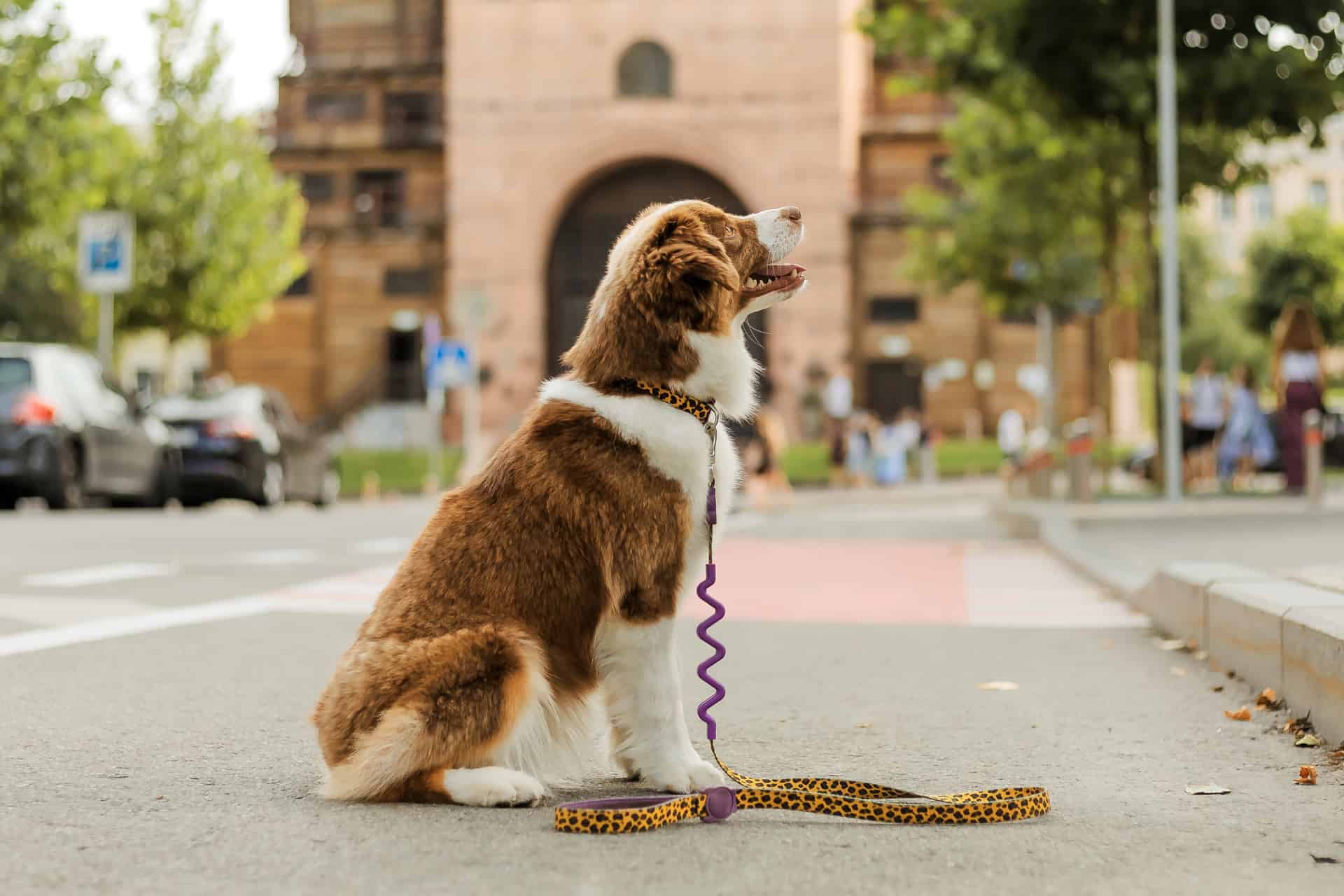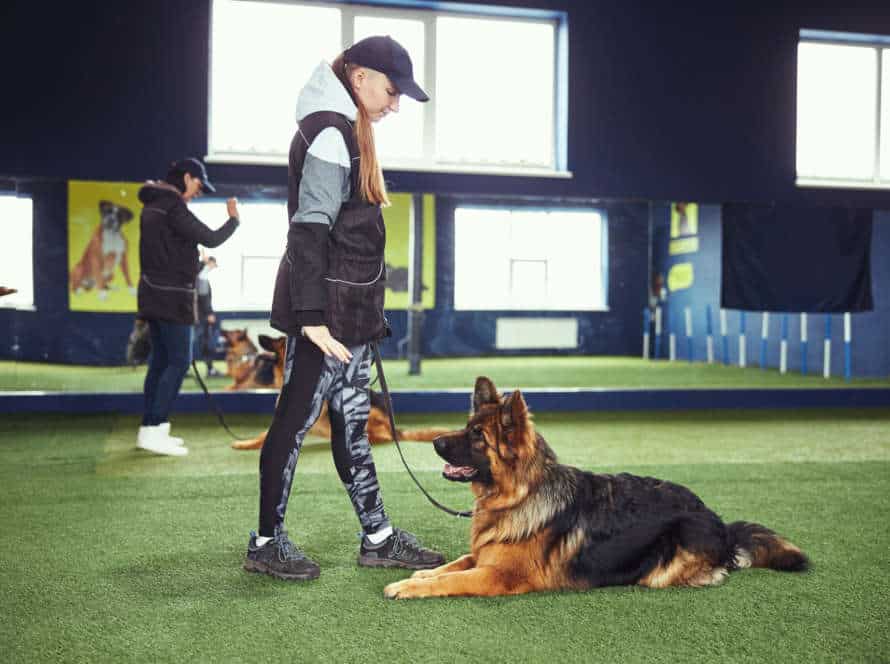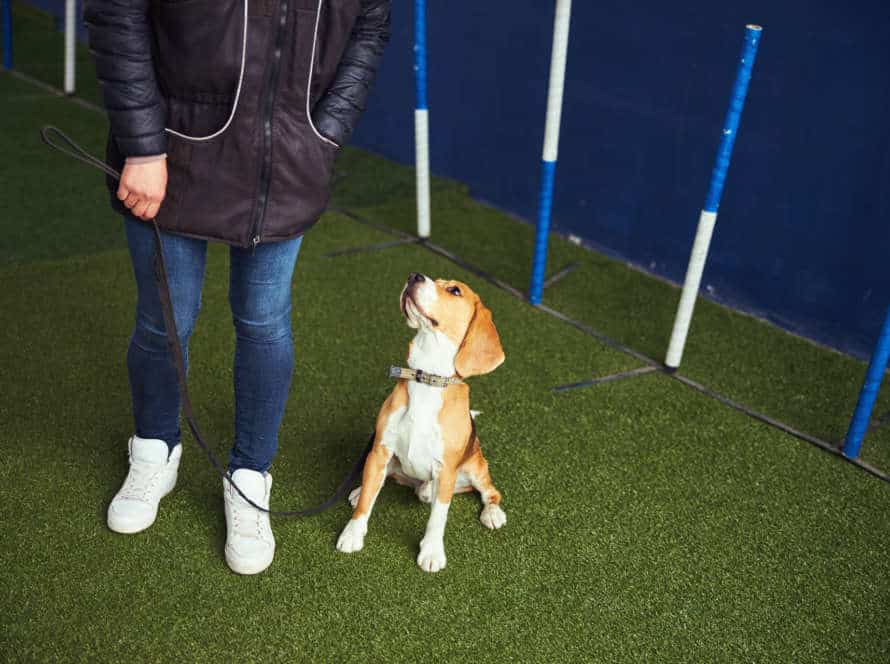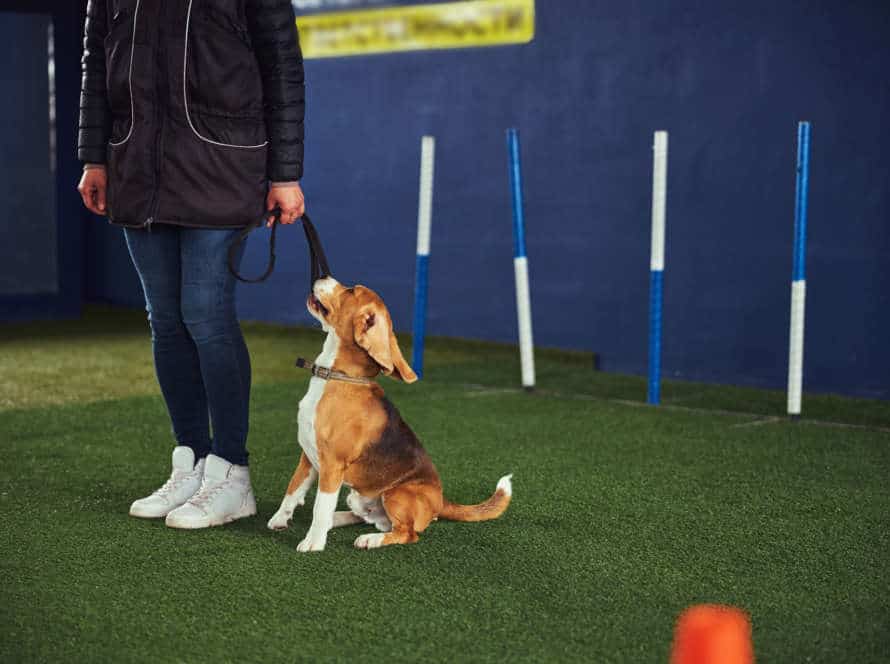Addressing Common Leash Training Challenges: Tips and Techniques
Leash training your pooch can be a tough process, but it doesn’t have to be. Here are some tips to tackle common leash training issues and make it as easy as possible.
- Pulling on the leash? Stop walking and wait for them to chill out before starting again. Use a shorter leash and try changing direction to stop them from pulling.
- Fear of the leash? Introduce it gradually. Leave the leash in a place they can see, but not be scared of. Offer rewards for exploring the leash.
- Leash aggression? Get help from a pro dog trainer or behaviourist. They will know what to do safely and effectively.
Always use positive reinforcement and be patient. With consistency and practice, your dog will soon be a well-trained walking buddy.
Understanding the Basics of Leash Training
Leash training is essential for dog owners. It gives control outdoors and strengthens the bond between pup and parent. Before beginning, it’s important to understand the basics of leash training. Rewards, positive associations, those kinds of things. Let’s learn the basics!
Common reasons Why Your Dog May Struggle With Leash Training
Leash training can be a tough task for pooches of all ages, breeds, and personalities. Here are some common reasons why your pup may have issues with leash training, plus tips and tricks to address these challenges:
- Fear & anxiety: If your doggo is scared or anxious, they may have struggles with leash training. Start by introducing the leash in a familiar and safe environment. Gradually build up the length and time of your walks.
- Pulling & lunging: If your pup pulls or lunges on the leash, they may be over excited or have too much energy. Use positive reinforcement techniques, like rewarding them for walking at your pace or redirecting their attention.
- Distractions: Pups that are easily distracted may struggle with leash training. Limit distractions during training by walking in calm places or using a leash that provides you more control.
- Health: Dogs that have health issues may battle with leash training. Talk to your vet to check for any underlying health problems and adjust your training techniques according to your pup’s needs.
Patience, consistency, and positive reinforcement are key to leash training your pooch. With time and effort, any dog can become a fantastic walking buddy.
Different Types of Leash and Collars Available
Knowing the different leashes and collars is vital to leash training success. Common ones are:
- Standard Leash: Usually made of nylon, cotton or leather, and come in various lengths and widths.
- Retractable Leash: Has an extending/retracting cord for dogs to explore.
- Martingale Collar: Also known as limited-slip, designed to stop dogs slipping out.
- Head Collar: Fits around the head and reduces pulling, giving more control.
- Harness: Pulling force spread across the chest instead of the neck – suitable for dogs with respiratory issues.
Before selecting, think about the dog’s size, habits and temper. Pick one that offers control and comfort.
Leash training challenges can include pulling, aggression & fear. It needs patience, consistency and positive reinforcement. Expert advice may help.
How to Choose a Leash and Collar for Your Dog’s Breed
Picking the ideal collar and leash for your pup is key for successful leash training. Here are some tips to assist you to choose correctly:
- Contemplate your pup’s size and strength. For large and strong breeds, a wide and sturdy nylon or leather collar works best. Smaller breeds can wear a more delicate fabric or decorative collar.
- Think about your pup’s behavior. If they are still learning to walk on a leash, then a shorter leash is ideal. If they like to pull or lunge, a no-pull harness is wise to avoid choking or injury.
- Lastly, consider your budget. Quality collars and leashes can be costly, but they last longer and are more comfortable for your pup.
Pro Tip: Always watch your pup when they have a collar or leash on, and never leave them alone with it on.
Common Challenges during Leash Training
Trainers know that pups differ. To make leash training simpler, here are some common issues and tips. For pups with separation anxiety, and adolescent dogs wanting to explore, these solutions can help. Leash training will be a smoother journey with these techniques!
Pulling on the Leash
Pulling on the leash is a problem many dog owners face. It can make walks uncomfortable, annoying, and even dangerous. Here are some tips to help:
- Treats: Use treats to reward your pup when he stays close.
- Stop and Go: When your dog pulls, stop and wait for him to come back.
- Change Directions: Change your direction if he pulls.
- Harness: Use a no-pull harness instead of a collar.
- Be Consistent: Keep practicing and don’t get discouraged.
With patience and positive reinforcement, you can overcome pulling on the leash!
Refusal to Walk on Leash
Refusing to walk on a leash is a common problem during training. Reasons for this could be fear, discomfort or lack of training. Here are some tips:
- Get a secure, comfortable collar or harness that fits your dog well.
- Let your dog sniff and check out the leash before attaching it.
- Start with walking in your home or a fenced-in area.
- Reward your dog with treats or verbal praise when they walk on the leash.
- Speak calmly and cheerfully when walking your dog.
- If they refuse to walk, try changing the route or adding more playtime.
- Pro Tip: If there’s still resistance, consult a professional trainer for help. With patience and the right techniques, you can help your dog get accustomed to leashes.
Reactiveness to External stimuli
Dogs react to outside influences. This can make leash training difficult. Common issues include pulling, lunging, barking, and whining. Follow these tips to help:
- Pulling: Train your pup to stay near you, and hold the leash right.
- Lunging: Slow down or stop when your dog lunges.
- Barking/Whining: Take away any distractions that could be making them anxious.
Stay consistent and patient. It’ll help your pooch overcome any issues with leash training!
Excessive Barking While Walking
Too much barking while on leash? It can be both tough and embarrassing. But with a few tips, you can fix this issue!
First, identify the cause – is it fear, excitement, or territorial behavior?
Second, use positive reinforcement during training. Give treats or praise when your pup behaves quietly.
Third, distract your pup from the trigger. Change directions or offer a toy or treat.
Fourth, use training aids like bark collars or anti-bark devices only if other methods don’t work.
With patience and dedication, you can enjoy peaceful walks with your pup!
Aggressiveness Towards Other Dogs or People
Aggression towards other dogs or humans is a common problem during leash training. To have a safe and enjoyable walking experience, here are some helpful tips:
- Train your pup basic obedience to build trust and use commands.
- Slowly introduce them to different environments and social settings for socialization.
- Use treats or praise for positive reinforcement.
- Don’t use physical punishment, it could make them more aggressive.
- Use leash training methods like ‘stop and go’ or ‘heel’ commands to discourage pulling.
By taking your time and being consistent, you and your furry friend will have a safe and fun walk!
Techniques to Overcome Leash Training Challenges
Leash training can be tricky to get right. Some people may get stuck in a bind when it comes to training their pup. But, don’t worry! There are simple tricks that can help you through the process.
Let’s check out some of these techniques and learn how to make leash training easier for your pup:
Positive Reinforcement Training
Positive reinforcement training focuses on rewarding desired behaviors, instead of punishing unwanted ones. This makes it perfect for leash training! Here’s how to use it:
- Reward your pup with treats or positive language when they walk without pulling.
- Take breaks so they don’t get overwhelmed.
- Change the walking speed and direction to keep them engaged.
- Don’t use physical punishment or negative reinforcement.
- Use a harness or head collar to prevent choking.
Pro Tip: Patience and consistency are key to successful leash training. With positive reinforcement, your pup will be well-behaved and happy on a leash in no time!
Desensitization
Desensitization is a technique to help dogs with leash training. It involves exposing the dog gradually to the things that make them act up, reducing the intensity of their reaction.
To desensitize your furry pal:
- Introduce the leash to them over time.
- Start with short leash times and gradually increase the duration of the walk.
- If the dog gets reactive to other dogs and people, begin in a quiet area. Increase the distractions gradually.
- Give rewards for walking calmly on the leash.
- Repeat the process regularly, making it more and more difficult until the dog is used to the leash and can walk calmly in different places.
Counterconditioning
Counterconditioning can help with leash training issues. To use it:
- Identify what causes your pup to misbehave. Examples: other dogs/people, loud noises, new places.
- Introduce them to the trigger in a controlled environment and reward them if they stay calm. Increase intensity or duration gradually.
- Repetition is key. Increase exposure to the trigger over time.
- With practice, they’ll learn that the trigger has positive connotations and be calm while on a leash.
Clicker Training
Clicker training is a way to train your pup using positive reinforcement. It can be effective in teaching new behaviors and addressing leash training issues.
Follow these steps:
- Decide on the behavior you want your pup to learn, like walking calmly on a leash.
- Use the clicker to mark the desired behavior, like when your pup is calm on the leash without pulling.
- Immediately reward your pup with a treat, praise, or play after clicking.
- Do this consistently until your pup links the sound of the clicker with positive reinforcement.
By using clicker training, plus common leash training techniques like positive reinforcement, distraction training, and the right equipment, you can address leash training issues and help your pup learn to walk calmly on the leash.
Using Treats and Rewards
Treats and rewards are a go-to way to tackle leash training issues with dogs. By positively reinforcing good behavior, your pup learns that it pays off. So, here are some tips for successful leash training:
- Use tasty treats just for training. Like chicken, cheese, or hot dog.
- Reward your dog for walking by your side with no pulling.
- Quickly give a treat for desirable behavior, like eye contact or sitting quietly.
- Spoil your pup with praise and treats when they do something like ‘Heel‘ or ‘Sit‘.
- Slowly cut down on treats while still praising them for good behavior.
- Patience and consistency are key to a successful leash training.
Tips for Successful Leash Training
Dog owners, have you ever struggled with leash training? Don’t fret! There are solutions. Here are some common challenges and easy-to-follow tips. They’ll help your pup be a leash training success!
Patience and Consistency
Patience and consistency are the two main ingredients to successful leash training. To tackle common challenges, use tips and techniques that are effective and kind.
Start with short and frequent training sessions to keep your pup engaged and motivated. Reward them with treats and praise for good behavior. Choose a leash that fits your dog, and introduce it gradually to reduce stress.
Consistency is key! Use the same commands and methods, and avoid mixed signals that may confuse your dog.
Be patient and kind when addressing leash aggression or pulling. Each dog is different, and may require different strategies and timelines.
Remember, the goal is to create a positive association with walking on a leash. With time and consistency, both you and your dog will reap the rewards.
Avoiding Punishment-Based Training Techniques
Steer clear of punishment-based training when leash training your pup. Here are a few tips for success without it:
- Positive reinforcement: Give treats, praise, and love when your dog does something right – like walking without pulling.
- Consistent training: Keep sessions brief and consistent to teach the right behavior and avoid bad habits.
- Variety of tools: Try leashes, harnesses, and collars to find what works best for your doggo’s size and personality.
Reminder: Leash training takes time, patience, and consistency. Don’t use punishment-based methods. They can damage the bond and create long term issues. Instead, reward positive behavior and make the experience enjoyable.
Finding the Right Timing and Scheduling for Your Dog’s Training
Finding the perfect timing for training your pup is a must for successful learning. Here are some guidelines to help with the leash training and common issues:
- Pick the perfect time: Dogs are most attentive when they’re peaceful and focused. Train your pup after they’ve had a snack or a nap.
- Keep it snappy and frequent: Quick, regular sessions are more effective than long, far between ones. Aim for 10-15 minutes at a time, a few times a day.
- Break it into pieces: Break down the training into smaller, feasible steps. Begin with easy commands such as “sit” and “stay” and advance to more complex tasks as your pup progresses.
- Rewarding reinforcement: Treat your pup for good behavior with treats, praises and playtime. This will reinforce the desired behavior and make them more excited to learn.
- Be patient: Leash training can be tough, particularly if your pup has bad habits. Stay patient and consistent during the training, and don’t give up if your pup doesn’t right away react.
By following these tips, you’ll be on your way to training your pup to be a well-behaved, obedient companion.
Seeking Professional Help When Needed
Leash training your pup can be tricky. It’s okay to ask for help when you experience troubles. Here are common leash-training challenges and when to seek help:
- Pulling: If your dog pulls on the leash, causing discomfort or pain, hire a pro leash trainer.
- Reactivity: If pooch is reactive to other dogs or people on walks, find a dog behaviorist. They’ll provide techniques to address the issue.
- Fear/Anxiety: If your dog gets anxious when on a leash, talk to a vet. A professional trainer can help your pup overcome fears.
Leash training requires time, effort, and patience. Professional help can make the process smoother, more effective, and less stressful for you and your four-legged friend.
Conclusion
To sum up, leash training your pup can be intricate. Yet, with composure, consistency, and the right methods, it can be a gratifying experience for both you and your pup.
A few common issues you might encounter while leash training are: pulling, distractions, and fear or hostility toward other canines or people.
To beat these troubles, you could try positive reinforcement techniques like providing treats, admiration, and steady training. Avoid using punishment or negative reinforcement, as it can be damaging and unhelpful.
Always bear in mind to put your dog’s safety and wellbeing first, and never push them into uneasy situations. If you’re having trouble with leash training, seek advice from a professional dog trainer or vet, as they can provide personalized assistance and support.
(In this format, outlining the title can have more headings than necessary but they should all connect to the topic and the information should contribute to covering the major aspects needed for leash training challenges)
Leash training your furry pal can be tough. Here are some of the most common leash training challenges and tips on how to overcome them:
- Pulling on the leash? Shorten the leash or use a front-clip harness. Also, practice loose-leash walking in a low-distraction environment.
- Leash aggression? Counter-condition and get your pup to focus on you instead of the trigger.
- Fear of the leash? Introduce the leash gradually and use positive reinforcement with treats and praise.
- Distractions? Minimize them and use high-value treats to keep your pup engaged and focused.
- Overstimulation? Keep the training sessions short and fun. Gradually increase the duration and intensity as your pup gets used to it.
With patience and consistency, these leash training challenges can be overcome! Your furry friend will be a well-behaved leash walker in no time.
Frequently Asked Questions
1. Why does my dog pull on the leash?
Dogs pull on the leash for a variety of reasons, including excitement, fear, and lack of exercise. It’s important to determine the underlying cause to effectively address the behavior.
2. How can I stop my dog from pulling on the leash?
There are several techniques you can use to stop your dog from pulling on the leash, including positive reinforcement, frequent stopping, and changing directions. Consistency and patience are key to successful leash training.
3. My dog refuses to walk on the leash. What should I do?
Start by introducing your dog to the leash in a positive and relaxed environment. Offer treats and praise for any progress your dog makes. Gradually increase the amount of time your dog spends on the leash and continue to reward good behavior.
4. How can I keep my dog focused during leash training?
Engage your dog with frequent stops, redirection, and interactive play or training exercises. Use positive reinforcement to encourage good behavior and always work at a pace that is comfortable for your dog.
5. My dog lunges and barks at other dogs while on the leash. What can I do?
Teach your dog to focus on you and reward calm behavior around other dogs. Practice obedience training and gradually introduce your dog to other dogs on neutral territory, such as a park or open field.
6. When should I seek professional help for leash training?
If your dog’s leash behavior is causing safety concerns or severe disruption to your daily routine, it may be best to consult with a professional dog trainer or behaviorist. They can help you identify the root cause of the behavior and develop a personalized training plan for your dog.







